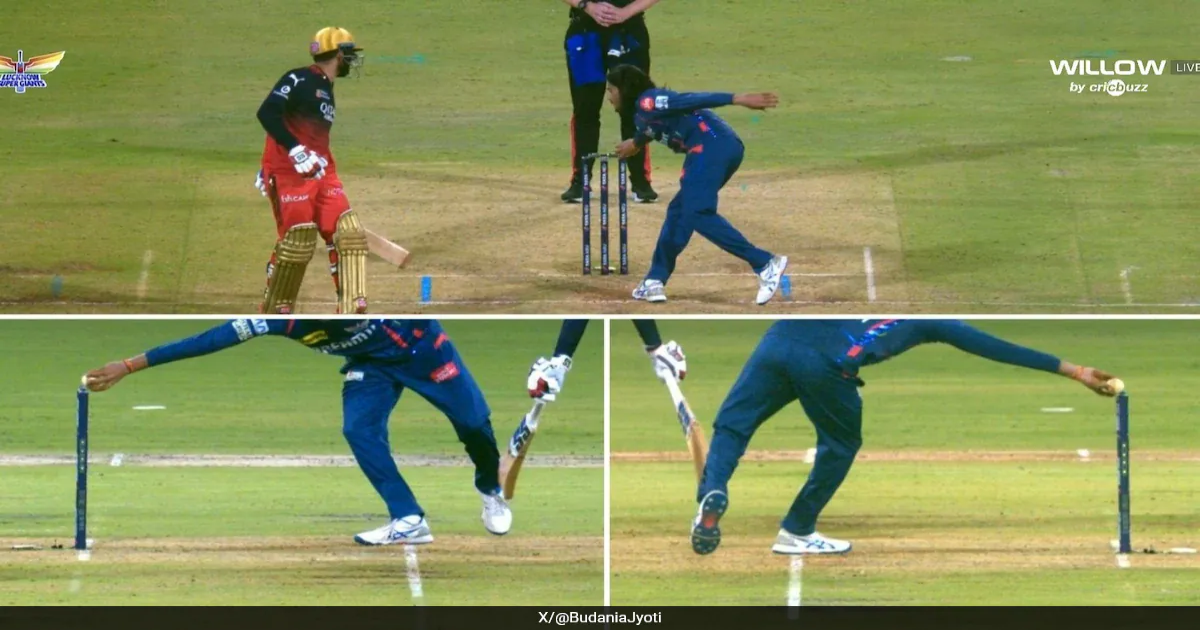The Royal Challengers Bengaluru (RCB) came close to losing their talismanic wicket-keeper batter during the gigantic run-chase of 228 runs against Lucknow Super Giants (LSG) in the Indian Premier League (IPL) 2025 match on Tuesday. It was the final ball of the 17th over of the match when LSG’s Digvesh Rathi attempted to run out the RCB star at the non-striker’s end. However, Lucknow captain Rishabh Pant decided to withdraw the appeal while the third umpire was running through the replays on the big screen.
Jitesh hugged Pant as the latter withdrew the appeal, helping the RCB star remain on the crease. However, had Pant not done so, the rules of the game would’ve kept Jitesh on the field. Though there’s no denying that the RCB wicket-keeper batter was outside the non-striker’s crease when Rathi dislodged the bails, the LSG spinner did commit a mistake which would’ve ruled his run-out attempt null and void.
As per the laws of the game, a bowler isn’t allowed to attempt a non-striker’s run-out after he has completed the bowling action or has already stepped outside the popping crease. Since these pre-requisites weren’t fulfilled, the third umpire would’ve eventually ruled Jitesh not-out.
This Digvesh Rathi not only issues challans… but is also a fraud…
“Digvesh Rathi” #RCBvsLSG “Jitesh Sharma” “Digvesh Rathi” #RCBvsLSG “Rishabh Pant” Render Digvesh “Jitesh Sharma” “And Putin” #IPL25@StarSportsIndia pic.twitter.com/2C1Rr4P1qU
— Sahil Khanna (@SahilKh83593460) May 27, 2025
MCC Laws Explained:
38.3.1 At any time from the moment the ball comes into play until the instant when the bowler would normally have been expected to release the ball, the non-striker is liable to be run out if he/she is out of his/her ground. In these circumstances the non-striker will be out run out if he/she is out of his/her ground when his/her wicket is put down by the bowler throwing the ball at the stumps or by the bowler’s hand holding the ball, whether or not the ball is subsequently delivered.
38.3.1.1 The instant when the bowler would normally have been expected to release the ball is defined as the moment the bowler’s arm reaches the highest point of his/her normal bowling action in the delivery swing.
38.3.1.2 Even if the non-striker had left his/her ground before the instant at which the bowler would normally have been expected to release the ball, once the bowler has reached that point it is no longer possible for the bowler to run out the non-striker under this Law.
Nevertheless, what Rishabh Pant did despite knowing the importance of Jitesh’s wicket is worthy of an applause.
In the end, Jitesh turned into RCB’s match-winner, clinching the game for his side with 8 balls to spare.
